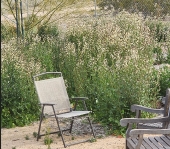


Justin Rhodes 45 minute video tour of wheaton labs basecamp
will be released to subscribers in:
soon!







~ Spiralmama Herbal Magick ~
Supporting vibrant health in my community by providing education, nutrition, herbal connection and ritual through grateful interaction with Gaia.
 2
2




 1
1









 3
3




 3
3




Principal - Terra Phoenix Design
http://TerraPhoenixDesign.com




 1
1












 1
1




grassygirl wrote:
is the soil/wood chips in there toxic?
[img]http://i109.photobucket.com/albums/n52/havlik1/permie%20pics2/permiepotrait3pdd.jpg[/img]
"One cannot help an involuntary process. The point is not to disturb it. - Dr. Michel Odent
 2
2




 9
9













The ultimate goal of farming is not the growing of crops, but the cultivation and perfection of human beings. - Masanobu Fukuoka































maria wrote:
Besides hugelkulture, how have you made raised beds?





 1
1












Brenda
Bloom where you are planted.
http://restfultrailsfoodforestgarden.blogspot.com/




Irene Kightley wrote:
I make them from chestnut poles cut on site and as our land is on a slope I terrace, working around the tree roots
I've also made them from tree roots dug up by the pigs and too beautiful to burn. (This bed has a hugelkultur base and is now seven years old and I didn't water it at all last year.)
Paul I've just made more growing space which covers a lawn and after we put the new poles down I pull the stones and wood towards the edges and more and more compost (helped by the chickens) makes it's way by gravity down the slope to the raised bed. I'll mulch just before planting.
The mulch also goes on the paths and the chickens clean them regularly so the lawn will disappear completely between raised beds.




 2
2




















T. Pierce wrote:
i assume you speak of composite decking?
it has no structural strength to it. even using it on a deck the structure has to be wood. and spacing of wood joists cant be beyond 16" centers. or the decking will bow and be very weak. plus the composite decking is not all they claim it is. it will mold and mildew. the sun will utterly destroy it. and there is no real good way to preserve it like you can wood. in the long run, if you could even figure out a way, to make it strong enuff so that it looks good...........it wont look as good as your thinking b/c of the constant contact to the wet ground.
and then there is the cost issue as you mentioned................

























Becky Purvis wrote:
I have no idea what PT pine is so I didn't even flinch when I read it.
Since I'm not filthy rich (rats), pine will probably be the wood of choice. The plastic on the inside sounds like a good idea. I really had my heart set on the fake wood that looks real - like Trex or Timbertech. I've never used them but they sounded so nice. I want it to look and act like wood but last forever. Sigh. I guess I'll stick with real wood. I'm sure pine will cost a lot less which does make a difference. We're saving our pennies so we can do the yard in the fall.
We've been wanting a new, really big TV for the family room since ours is so old but my husband thinks we should do the garden first. Isn't he a great guy?! Yup, pine will have to do.













